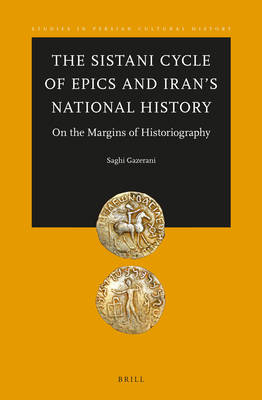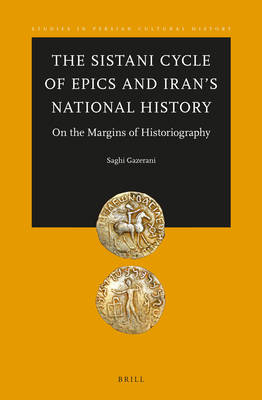
- Afhalen na 1 uur in een winkel met voorraad
- Gratis thuislevering in België vanaf € 30
- Ruim aanbod met 7 miljoen producten
- Afhalen na 1 uur in een winkel met voorraad
- Gratis thuislevering in België vanaf € 30
- Ruim aanbod met 7 miljoen producten
Zoeken
The Sistani Cycle of Epics and Iran's National History
On the Margins of Historiography
Saghi Gazerani
€ 238,45
+ 476 punten
Omschrijving
This work examines the entire corpus of the Sistani Cycle of Epics, both parts included in Ferdowsi's Shāhnāmeh and those appearing in separate manuscripts. It argues that the so-called "epic literature" of Iran constitutes a kind of historiography, encapsulating reflections of watershed events of Iran's antiquity.
By examining the symbiotic relationship of the texts' content and form, the underpinning discourse of the various stories is revealed to have been shaped by polemics of political legitimacy and religious conflict. This discourse, however, is not abstract. The stories narrate, within their generic constraint, some of the affairs of the Sistani kingdom and its relationship to the Parthian throne, mainly from the first century BCE to the end of the second century CE.
By examining the symbiotic relationship of the texts' content and form, the underpinning discourse of the various stories is revealed to have been shaped by polemics of political legitimacy and religious conflict. This discourse, however, is not abstract. The stories narrate, within their generic constraint, some of the affairs of the Sistani kingdom and its relationship to the Parthian throne, mainly from the first century BCE to the end of the second century CE.
Specificaties
Betrokkenen
- Auteur(s):
- Uitgeverij:
Inhoud
- Aantal bladzijden:
- 250
- Taal:
- Engels
- Reeks:
- Reeksnummer:
- nr. 7
Eigenschappen
- Productcode (EAN):
- 9789004281998
- Verschijningsdatum:
- 23/11/2015
- Uitvoering:
- Hardcover
- Formaat:
- Genaaid
- Afmetingen:
- 155 mm x 235 mm
- Gewicht:
- 524 g

Alleen bij Standaard Boekhandel
+ 476 punten op je klantenkaart van Standaard Boekhandel
Beoordelingen
We publiceren alleen reviews die voldoen aan de voorwaarden voor reviews. Bekijk onze voorwaarden voor reviews.








